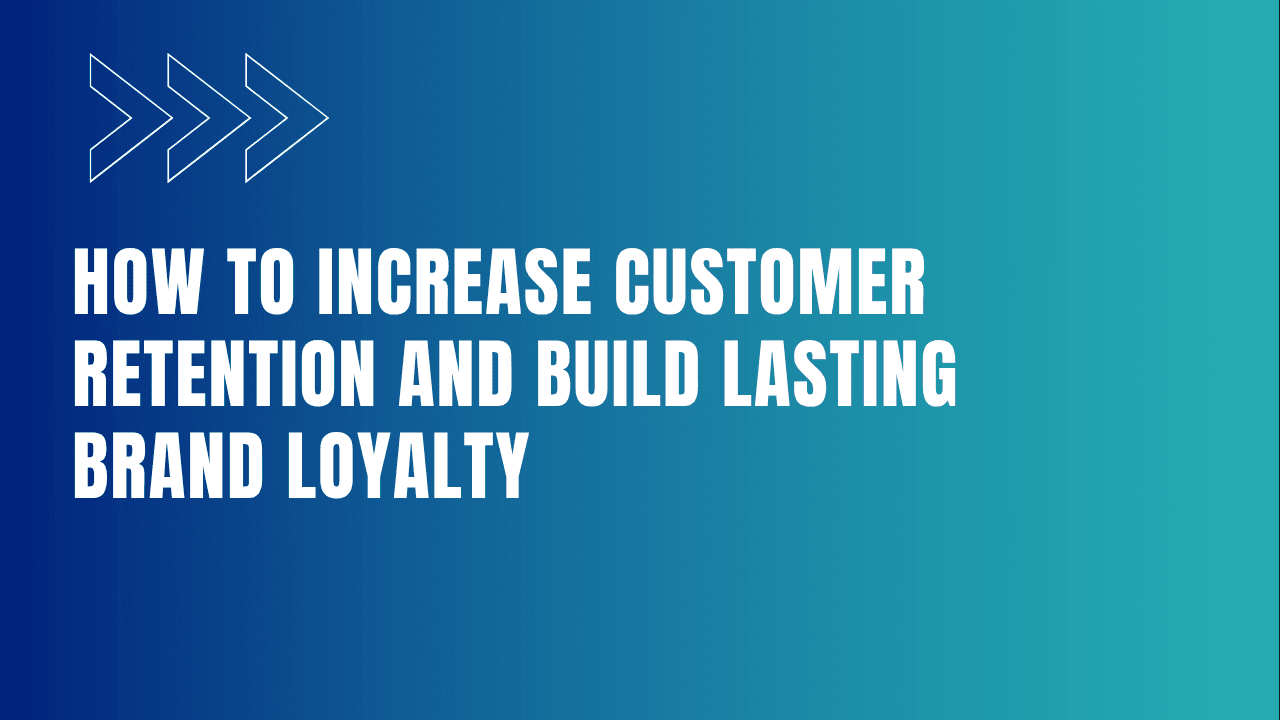How to Increase Customer Retention and Build Lasting Brand Loyalty

Introduction
Customers ghosting you? It happens. Even the most loyal buyers go silent over time — maybe they forgot, lost interest, or got tempted by a competitor. But before you cross them off your list, know this: re-engagement is not only possible — it's profitable.
In fact, bringing back an old customer is cheaper than acquiring a new one and more likely to convert. Let’s break down what customer re-engagement means, and explore powerful, affordable strategies to bring your customers back.
For deeper insights on retaining B2B customers specifically, you can also explore this guide: Proven B2B Customer Retention Strategies You Should Be Using.
What Is Customer Re-Engagement?
Customer re-engagement is the process of reactivating inactive users or lapsed customers by reigniting their interest in your product, service, or brand.
Think of it as reigniting a spark — the customer once showed intent or interest. Now, it’s time to remind them why they loved your brand in the first place.
Why Customers Go Inactive
- They forgot about you
- They didn’t find value in their first purchase
- Your follow-up was inconsistent
- They went to a competitor
- Their needs changed
Step one: Identify your churn triggers — then address them with the right re-engagement strategy.
Top Re-Engagement Strategies to Win Back Lost Customers
Personalized “We Miss You” Emails
A simple, heartfelt email can work wonders. Go beyond “come back” — personalize it based on past purchases or behaviors.
Tips for success:- Add product recommendations they might like
- Offer a time-sensitive discount
- Remind them what they’re missing
Retargeting Ads
If a user hasn’t bought in a while but is still cookied, show them targeted ads across platforms like Facebook, Instagram, or Google Display.
Examples:- “Still thinking about X?”
- “Last chance to grab your favorite item”
- “Come back and get 10% off — just for you”
Re-Engagement SMS Campaigns
SMS gets open rates above 90% — making it perfect for time-sensitive re-engagement.
Use cases:- Flash sale just for dormant customers
- Personal reminders: “Still interested in X?”
- Loyalty point reminders (if you have a loyalty system)
Reactivation Offers via Email + Landing Page
Create a dedicated reactivation landing page with a limited-time offer and a clear CTA. Pair this with an email campaign targeting dormant segments.
Example:Headline: “It’s Been a While — Here’s 15% Off to Come Back”
Button: “Reactivate My Account”
Use Automation + Loyalty to Bring Them Back
Automated email flows, paired with a smart loyalty system, work long-term. Set up triggers to reward points for repeat purchases, referrals, or product reviews.
Tool tip:Use tools like Ziovy, Klaviyo, or Mailchimp to create win-back automation flows with built-in loyalty touchpoints.
Ask for Feedback
Sometimes, customers drift because they had a bad experience — but never told you. Re-engage them by asking for honest feedback.
Subject line idea:“We noticed you’ve been quiet — what can we do better?”
Even if they don’t return, you gain valuable insights to improve.
Highlight What’s New
If you’ve launched a new feature, product, or collection — tell your lapsed customers. Give them a reason to rediscover your brand.
Messaging tip:“Since you left, we’ve changed a lot — and we think you’ll love it.”
When to Re-Engage?
30–90 days after last activity is the sweet spot. After that, your messaging must work harder to recapture attention.
Segment your customers into:- Recently inactive (30–60 days) → Use personalized offers
- Mid-term inactive (90–180 days) → Combine incentives + emotional appeal
- Long-term inactive (6+ months) → Focus on win-back with reactivation pages
Measure Your Re-Engagement Success
Track these key metrics:
- Open and click-through rates on re-engagement emails
- Conversion rate from dormant to active
- Redemption rate on reactivation offers
- Re-engagement ROI (compare offer cost to CLV)
Conclusion
Don’t give up on your old customers — many just need a nudge to come back. With the right re-engagement strategy, you can reignite interest, rebuild trust, and drive more revenue without chasing cold leads.
Remember: It’s not about begging customers to return — it’s about reminding them why they chose you in the first place.
Need help improving overall retention? Dive into our full retention playbook here: Proven B2B Customer Retention Strategies You Should Be Using.